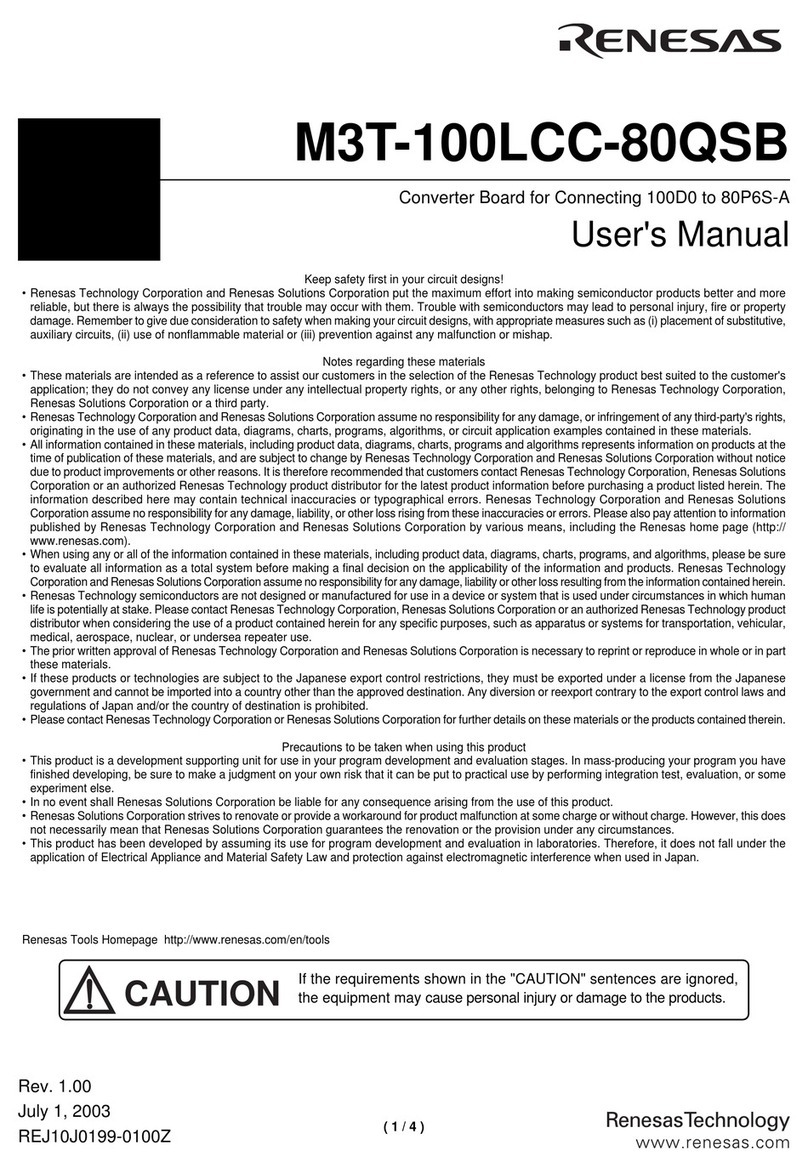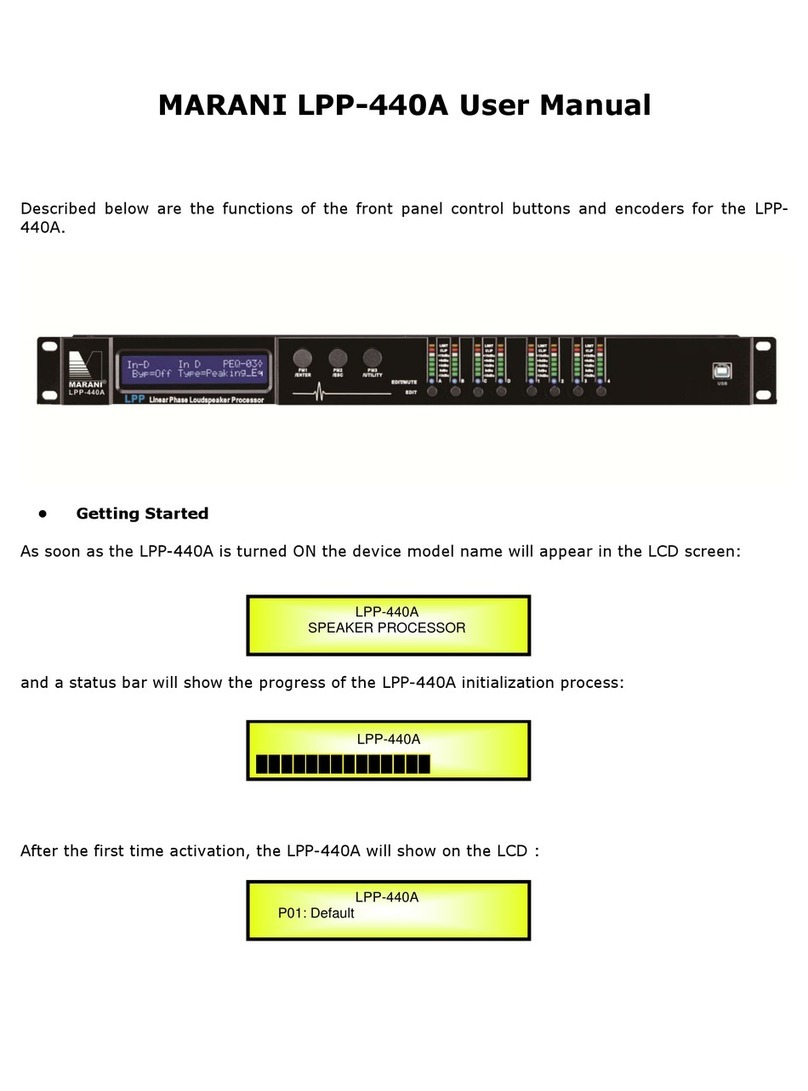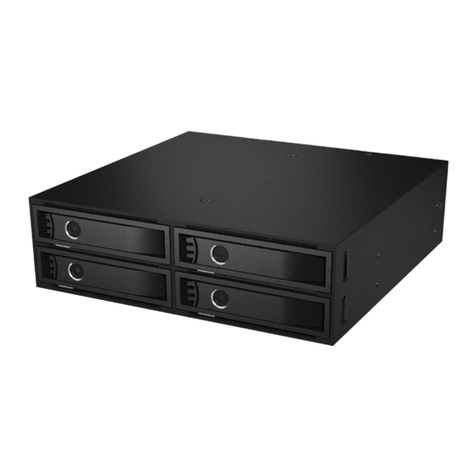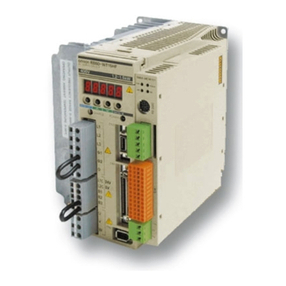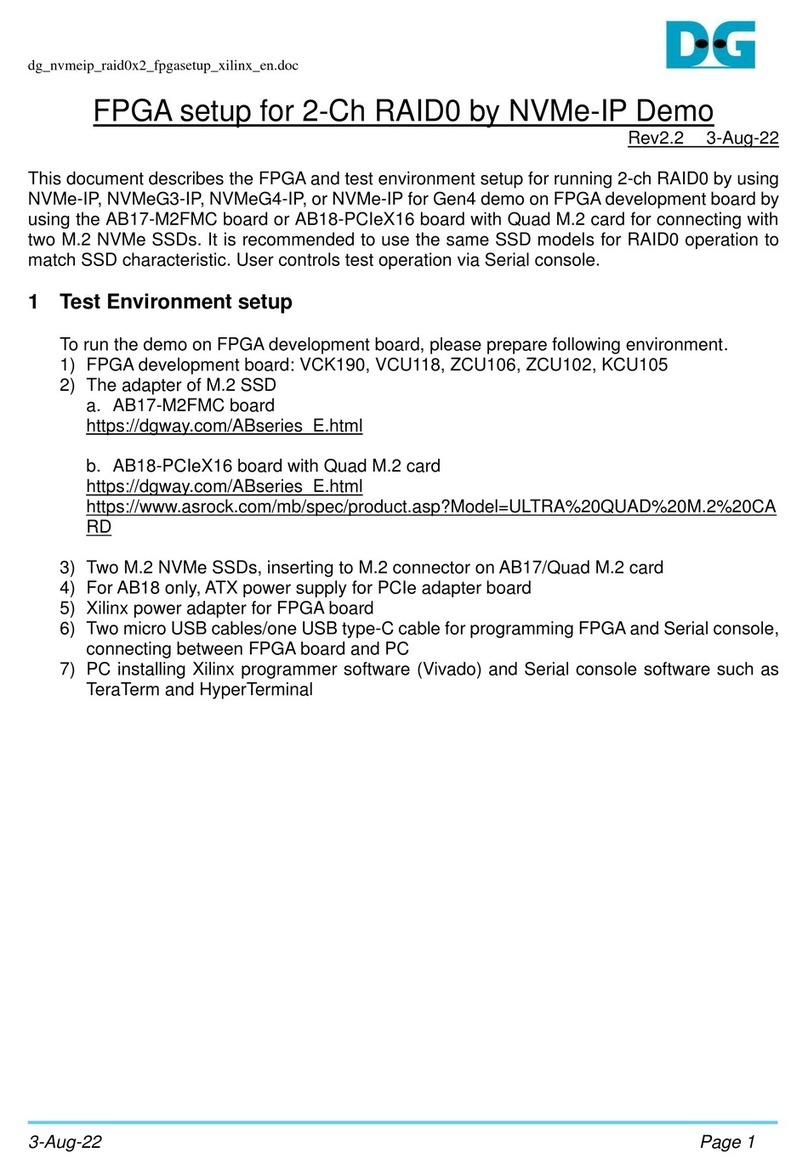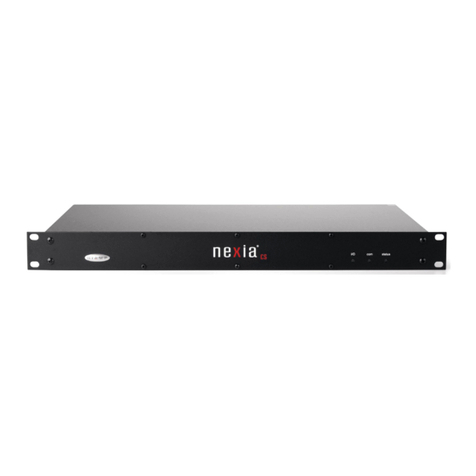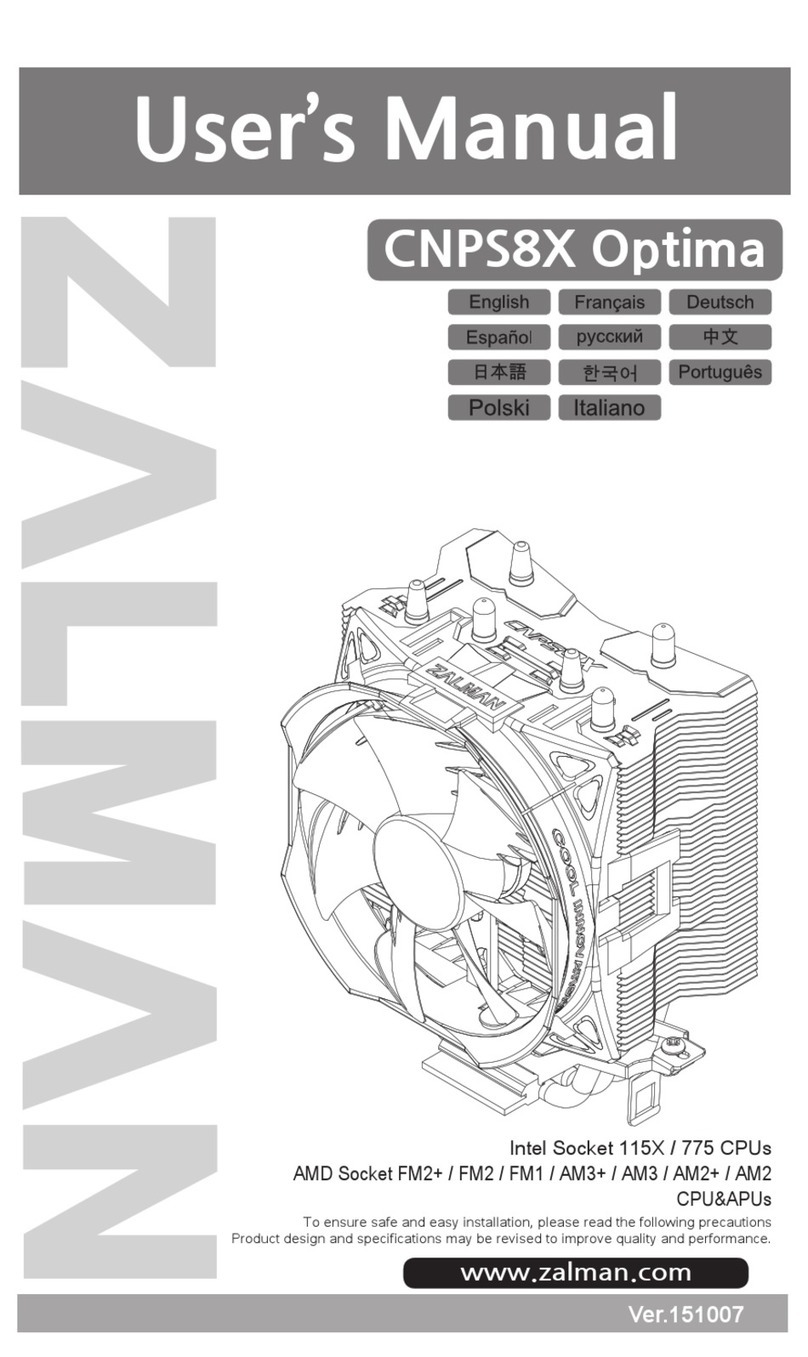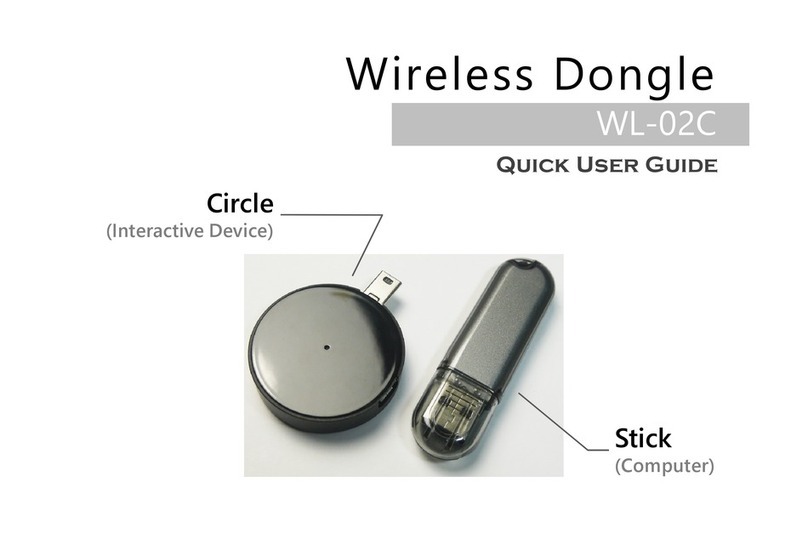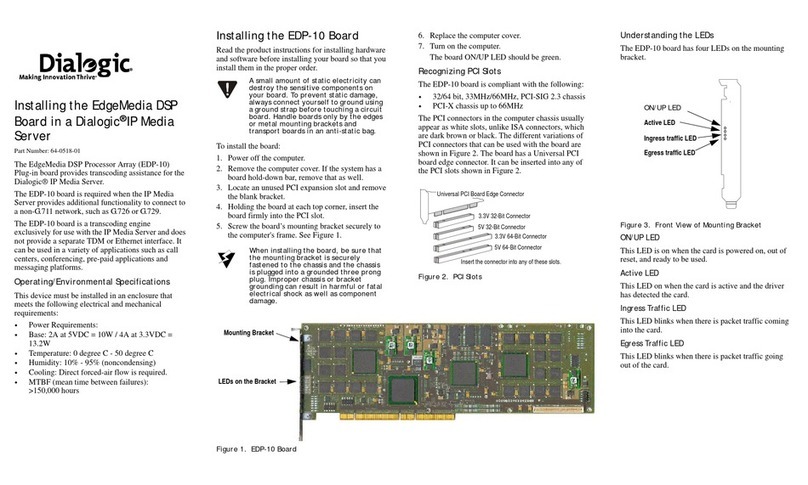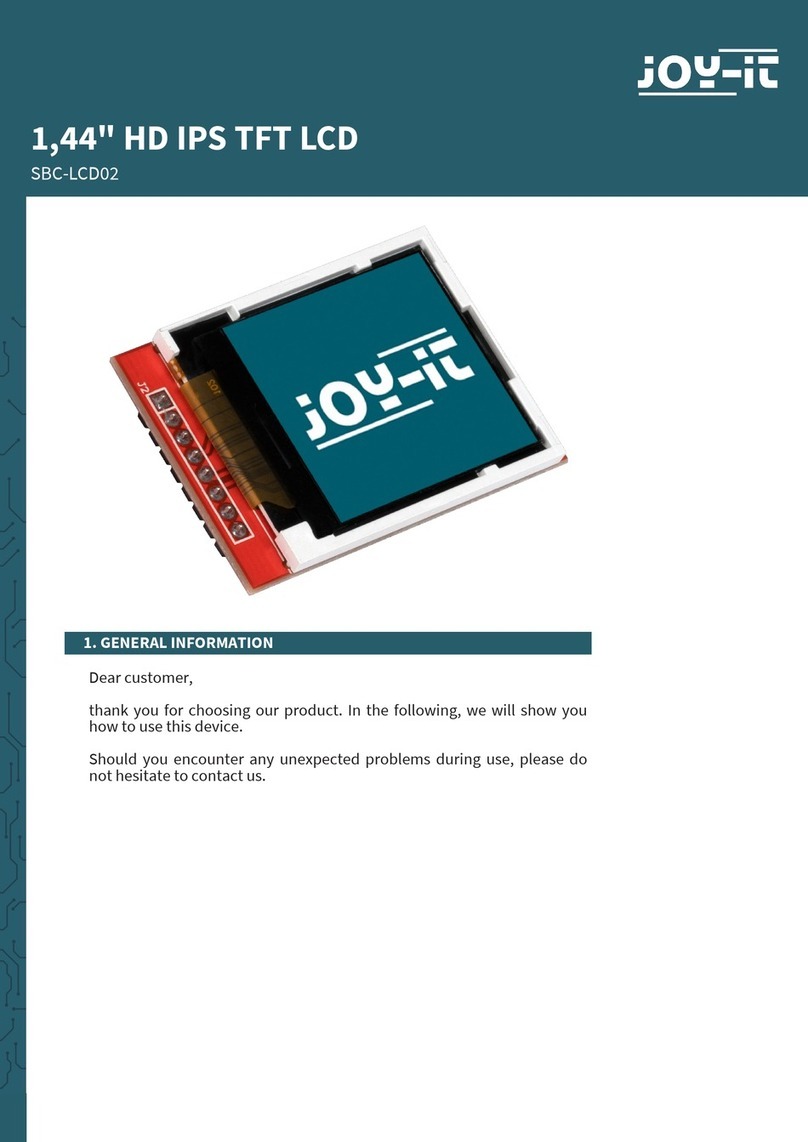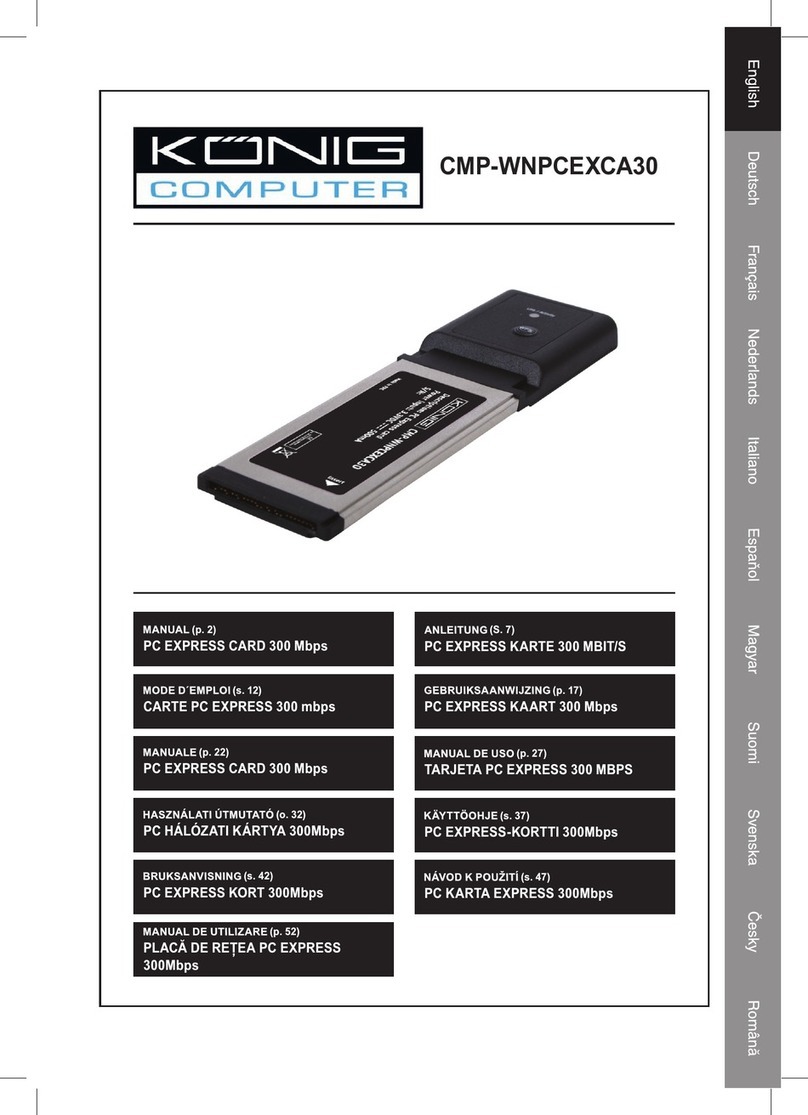STMicroelectronics X-NUCLEO-53L1A2 User manual

Introduction
This document provides detailed hardware information on the X-NUCLEO-53L1A2 expansion board. This expansion board is
compatible with the STM32 Nucleo family and the Arduino™ electronic boards. It is designed around the VL53L1 long distance
ranging sensor with multi target detection, and is based on the ST patented FlightSense technology.
To allow the user to validate the VL53L1 in an environment as close as possible to its final application, the X-NUCLEO-53L1A2
expansion board is delivered with a holder in which three different height spacers of 0.25 mm, 0.5 mm, and 1 mm can be fitted
with the cover glass above the spacer. The height spacers are used to simulate different air gap distances between the VL53L1
sensor and the cover glass.
The X-NUCLEO-53L1A2 expansion board is delivered with two VL53L1 breakout boards.
Getting started with X-NUCLEO-53L1A2 long distance ranging and multi target
ToF sensor expansion board based on VL53L1 for STM32 Nucleo
UM2759
User manual
UM2759 - Rev 2 - April 2021
For further information contact your local STMicroelectronics sales office.
www.st.com

Figure 1. X-NUCLEO-53L1A2 expansion board, spacers, cover glass, and breakout boards
UM2759
UM2759 - Rev 2 page 2/18

1Overview
The X-NUCLEO-53L1A2 expansion board features the VL53L1 long distance ranging sensor with multi target
detection, based on ST’s FlightSense, Time-of-Flight (ToF) technology.
It is compatible with the STM32 Nucleo development board family, and with the Arduino UNO R3 connector
layout.
Several ST expansion boards can be stacked through the Arduino connectors, which allows, for example, the
development of VL53L1 applications with Bluetooth or Wi-Fi interfaces.
The X-NUCLEO-53L1A2 expansion board is delivered with:
• Three spacers of 0.25 mm, 0.5 mm, and 1 mm height, used to simulate different air gaps between the
VL53L1 and the cover glass.
• Two cover windows to simulate the integration of the VL53L1 into the customer’s final product.
• Two VL53L1 breakout boards which can be plugged onto the X-NUCLEO-53L1A2 expansion board or
connected through flying wires to the X-NUCLEO-53L1A2 expansion board.
• Two 10-pin connectors to enable the customer to connect the two breakout boards onto the X-
NUCLEO-53L1A2 expansion board.
Note: The VL53L1 is delivered with a liner to prevent potential foreign material from penetrating inside the module
holes during the assembly process. This liner must be removed at the latest possible step during final assembly,
before module calibration.
Table 1. Ordering information
Order code Description
X-NUCLEO-53L1A2 STM32 Nucleo expansion board - spacers and glass - two breakout boards
UM2759
Overview
UM2759 - Rev 2 page 3/18

2Document references
Table 2. Document references
Description DocId
VL53L1 datasheet DS11786
X-NUCLEO-53L1A2 data brief DB4214
P-NUCLEO-53L1A2 data brief DB4261
X-CUBE-53L1A2 data brief DB4252
UM2759
Document references
UM2759 - Rev 2 page 4/18

3X-NUCLEO-53L1A2 expansion board
This section describes the X-NUCLEO-53L1A2 expansion board features and provides useful information for
understanding the electrical characteristics.
Figure 2. X-NUCLEO-53L1A2 expansion board schematic diagram
UM2759
X-NUCLEO-53L1A2 expansion board
UM2759 - Rev 2 page 5/18

3.1 Description
The board allows the user to test the VL53L1 functionality, to program it and to understand how to develop an
application using the VL53L1. It integrates:
• 2.8 V regulator to supply the VL53L1
• Level translators to adapt the I/O level to the main board of the microcontroller
• Arduino UNO R3 connectors
• Optional VL53L1 breakout board connectors
• Solder drops to allow different configurations of the expansion board
It is fundamental to program a microcontroller to control the VL53L1 through the I2C bus. The application software
and an example of the C-ANSI source code are available on www.st.com/VL53L1.
The X-NUCLEO-53L1A2 expansion board and STM32 Nucleo development board are connected through the
Arduino UNO R3 connectors CN5, CN6, CN8, and CN9 as shown in Figure 3. X-NUCLEO-53L1A2 expansion
board connector layout and as described in Table 3. Left Arduino connector and Table 4. Right Arduino connector.
The X-NUCLEO-53L1A2 must be plugged onto the STM32 Nucleo development board through the Arduino UNO
R3 connectors.
Figure 3. X-NUCLEO-53L1A2 expansion board connector layout
1
2
3
4
5
6
CN6
IOREF
+3.3V
GND
1
2
3
4
5
6
7
8
VINP (3V3)
GND
NC
RESET
+5V
VIN
CN9
CN5
D0
D1
D2
D3
D4
D5
D6
D7
D8
D9
D10
D11
D12
D13
GND
AVDD
D14
D15
SCL
SDA
INT_L
GPIO1_L INT_L*
NC
INT_R*
NC
GPIO1_R INT_R
CN8
INT U14 GPIO1
INT* U17
Fit
NC
A2
A3
A4
A5
A0
A1
U15
U18
NC
U11
NC U10
10
9
8
7
6
5
4
3
2
1
8
7
6
5
4
3
2
1
UM2759
Description
UM2759 - Rev 2 page 6/18

Table 3. Left Arduino connector
CN number VL53L1 board Pin number Pin name MCU pin X-NUCLEO-53L1A2 expansion
board function
CN6 power
1 NC NC
2 NC IOREF
Not used
3 NC RESET
Power 4 3V3 3V3 3.3 V supply
5 NC 5V Not used
Gnd 6 Gnd Gnd
Gnd
Gnd 7 Gnd Gnd
8 NC VIN
Not used
CN8 analog
1 NC PAO
2 NC PA1
GPIO1 3 INT PA4 Interrupt signal from VL53L1 on
board soldered device
4 NC PB0 Not used
GPIO1 5 INT PC1 (1)
By default not used, interrupt
signal from VL53L1 on board
soldered device
6 NC PC0 Not used
1. Depends on STM32 Nucleo board solder bridges, see details in Section: Solder drop configurations. These interrupt
signals are duplicated, but not used. This offers hardware connection flexibility in case of conflict on the MCU interface
management when the expansion board is used superimposed with other expansion boards. In this case, remove the solder
drop from the used interrupt and instead, fit the solder drop in “NC”.
UM2759
Description
UM2759 - Rev 2 page 7/18

Table 4. Right Arduino connector
CN number VL53L1 board Pin number Pin name MCU pin X-NUCLEO-53L1A2 expansion
board function
CN5 digital
SCL 10 D15 PB8 I2C1_SCL
SDA 9 D14 PB9 I2C1_SDA
8 NC AVDD Not used
Gnd 7 Gnd Gnd Gnd
6 INT_L PA5
Not used
5 NC PA6
4 NC PA7
3 NC PB6
GPIO1_L 2 INT_L PC7 By default not used, interrupt
signal from optional VL53L1 left
breakout board (1)
GPIO1_L 1 INT_L PA9
CN9 digital
8 NC PA8
Not used
7 NC PB10
6 NC PB4
5 INT_R PB5
By default not used, interrupt
signal from optional VL53L1 right
breakout board (1)
4 NC PB3 Not used
3 INT_R PA10
By default not used, interrupt
signal from optional VL53L1 right
breakout board (1)
2 NC PA2
Not used
1 NC PA3
1. These interrupt signals are duplicated, but not used by default. This offers hardware connection of the breakout board
VL53L1 interrupt signals and flexibility in case of conflict on the MCU interface management when the expansion board is
used superimposed with other expansion boards. In this case, select, through a solder drop, the MCU port which is free.
UM2759
Description
UM2759 - Rev 2 page 8/18

3.2 Electrical schematic
Figure 4. X-NUCLEO-53L1A2 expansion board schematic
VL53L1
VL53L1
VL53L1 application
VL53L1
* Can be NC or grounded
UM2759
Electrical schematic
UM2759 - Rev 2 page 9/18

3.3 List of materials
Table 5. List of materials
Components Value Reference Supplier Comments
VL53L1 application
C1, C3 100 nF X5R
Supply voltage decoupling
C2 4.7 µF X5R - 6.3 V
R1 47 k Interrupt output pull up
R2 47 k Reset input pull up
R66, R67 4.7 k SDA and SCL line pull up at 2.8 V
S1 VL53L1 ST ToF ranging sensor
VL53L1 breakout board interfaces
R20 47 k Left breakout board interrupt output
pull up
R21 47 k Left breakout board reset input pull
up
R22 47 k Right breakout board reset input pull
up
R23 47 k Right breakout board interrupt
output pull up
2.8 V regulator application
C8 10 µF X5R - 6.3 V Output voltage decoupling
C9 10 µF X5R - 6.3 V Input voltage decoupling
R35 49.9 k Feedback resistor bridge to set the
output voltage to 2.8 V
R43 20 k
U20 LD39050PUR ST Output programmable regulator
Level translator application
C4, C6, C11 100 nF 2.8 V decoupling capacitor
C5, C7, C13 100 nF
3.3 V decoupling capacitor
C12 1 µF X5R - 6.3V
R68, R69 4.7 k SDA and SCL line pull up at 3.3 V
U3, U9 TXS0108PWR TI For all signals except I2C interface
U24 ST2329AQTR ST For I2C interface
Add-on feature
C10 100 nF Supply decoupling capacitor
R45 4.7 k Push button pull up
R46 1 k Output pull up
R60 Delay time setting (def = 10 ms)
PB1 Push button
U22 TPS3838K33 TI Supervisory circuit
GPIO expander
C14, C15 100 nF Supply decoupling capacitor
UM2759
List of materials
UM2759 - Rev 2 page 10/18

3.4 Solder drop configurations
Solder drops allow the following configurations of the X-NUCLEO-53L1A2 expansion board:
• If the developer wants to make an application with several expansion boards stacked and there is:
– conflict with the microcontroller port allocation, the GPIO1 can be output on the CN8/A4 (U17 fitted) of
the Arduino connector. The default configuration is that GPIO1 is output on the CN8/A2 (U14 fitted) of
the Arduino connector.
– conflict on the I2C addresses, the addresses of the STMPE1600 can be modified (the default
addresses are A2, A1, A0, 000, and 001).
• If the developer wants to connect breakout boards (see Figure 5. Interrupt configurations) to the X-
NUCLEO-53L1A2 expansion board:
– the VL53L1 interrupt of the left breakout board can be output on the CN5/D9 (U10 fitted) or CN5/D8
(U11 fitted) of the Arduino connector. By default, the U10 and U11 are not fitted.
– the VL53L1 interrupt of the right breakout board can be output on the CN9/D4 (U15 fitted) or CN9/D2
(U18 fitted) of the Arduino connector. By default, the U15 and U18 are not fitted.
– the VL53L1 interrupt of the left and right breakout boards, GPIO1_L and GPIO1_R, can be shared with
the VL53L1 interrupt on the main board, GPIO1, by fitting U7 and U8 solder drops. By default U7 and
U8 are not fitted.
Figure 5. Interrupt configurations
UM2759
Solder drop configurations
UM2759 - Rev 2 page 11/18

3.5 Integrated device pinning
Figure 6. Integrated device pinning
1
2
3
4
5
6
7
8
9
10
20
19
18
17
16
15
14
13
12
11
A1
VCCA
A2
A3
A4
A5
A6
A7
A8
OE
B1
VCCB
B2
B3
B4
B5
B6
B7
B8
GND
TXS0108EPWR
A1
VCCA
A2
A3
A4
A5
A6
A7
A8
OE
Input:output 1. Referenced to VCCA
A-port supply voltage
Input:output 2. Referenced to VCCA
Input:output 3. Referenced to VCCA
Input:output 4. Referenced to VCCA
Input:output 5. Referenced to VCCA
Input:output 6. Referenced to VCCA
Input:output 7. Referenced to VCCA
Input:output 8. Referenced to VCCA
3-state output-mode enable
Input:output 1. Referenced to VCCB
B-port supply voltage
Input:output 2. Referenced to VCCB
Input:output 3. Referenced to VCCB
Input:output 4. Referenced to VCCB
Input:output 5. Referenced to VCCB
Input:output 6. Referenced to VCCB
Input:output 7. Referenced to VCCB
Input:output 8. Referenced to VCCB
Ground
B1
VCCB
B2
B3
B4
B5
B6
B7
B8
GND
TOP VIEWS
1
2
CT
GND
5 VDD
3MR 4 RESET
TPS3838
1
2
EN
LD39050PUR
GND
6
5
VIN
ADJ
3PG 4 VOUT
10
19
2
VL VCC
I/OVL1
ST2329A
I/OVL2
8
7
I/OVCC1
I/OVCC2
2OE 7 GND
10 9
NC NC
24
1
23 22 21 20 19
18
2 17
3 16
4 15
5 14
6 13
7 8 9 10 11 12
A2
GPIO_10
GPIO_9
GPIO_8
GPIO_6
GPIO_7
GND
A1 INT VCC SDA SCL
GPIO_0
GPIO_1
GPIO_2
GPIO_3
GPIO_4
GPIO_5
A0
GPIO_15
GPIO_14
GPIO_13
GPIO_12
GPIO_11
STMPE1600
UM2759
Integrated device pinning
UM2759 - Rev 2 page 12/18

4VL53L1 breakout board
The VL53L1 breakout boards are supplied at 2.8 V by the regulator present on the X-NUCLEO-53L1A2 expansion
board.
Figure 7. VL53L1 breakout board
Figure 8. VL53L1 breakout board schematic
VL53L1 breakout board
VL53L1
VL53L1
VL53L1 mini PCB
The VL53L1 breakout board can be directly plugged onto the X-NUCLEO-53L1A2 expansion board through the
two 10-pin connectors or connected to the board through flying leads.
When connected through flying leads, developers should break off the mini PCB from the breakout board, and
use only the VL53L1 mini PCB which is easier to integrate into customer devices, because of its small size.
UM2759
VL53L1 breakout board
UM2759 - Rev 2 page 13/18

Figure 9. VL53L1 mini PCB flying lead connection to X-NUCLEO-53L1A2 expansion board
UM2759
VL53L1 breakout board
UM2759 - Rev 2 page 14/18

5Safety
5.1 Electrostatic precaution
The user should exercise electrostatic precautions, including using ground straps when using the X-
NUCLEO-53L1A2 expansion board. Failure to prevent electrostatic discharge could damage the device.
Figure 10. Electrostatic logo
5.2 Laser considerations
The VL53L1 contains a laser emitter and corresponding drive circuitry. The laser output is designed to
remain within Class 1 laser safety limits under all reasonably foreseeable conditions including single faults, in
compliance with the IEC 60825-1:2014 (third edition). The laser output remains within Class 1 limits as long
as STMicroelectronic’s recommended device settings are used and the operating conditions specified in the
datasheet are respected. The laser output power must not be increased by any means and no optics should be
used with the intention of focusing the laser beam.
Figure 11. Class 1 laser product label
UM2759
Safety
UM2759 - Rev 2 page 15/18

Contents
1Overview ..........................................................................3
2Document references ..............................................................4
3X-NUCLEO-53L1A2 expansion board...............................................5
3.1 Description ....................................................................6
3.2 Electrical schematic ............................................................9
3.3 List of materials ...............................................................10
3.4 Solder drop configurations ......................................................11
3.5 Integrated device pinning .......................................................12
4VL53L1 breakout board ...........................................................13
5Safety ............................................................................15
5.1 Electrostatic precaution ........................................................15
5.2 Laser considerations...........................................................15
Revision history .......................................................................16
Contents ..............................................................................17
UM2759
Contents
UM2759 - Rev 2 page 17/18

IMPORTANT NOTICE – PLEASE READ CAREFULLY
STMicroelectronics NV and its subsidiaries (“ST”) reserve the right to make changes, corrections, enhancements, modifications, and improvements to ST
products and/or to this document at any time without notice. Purchasers should obtain the latest relevant information on ST products before placing orders. ST
products are sold pursuant to ST’s terms and conditions of sale in place at the time of order acknowledgement.
Purchasers are solely responsible for the choice, selection, and use of ST products and ST assumes no liability for application assistance or the design of
Purchasers’ products.
No license, express or implied, to any intellectual property right is granted by ST herein.
Resale of ST products with provisions different from the information set forth herein shall void any warranty granted by ST for such product.
ST and the ST logo are trademarks of ST. For additional information about ST trademarks, please refer to www.st.com/trademarks. All other product or service
names are the property of their respective owners.
Information in this document supersedes and replaces information previously supplied in any prior versions of this document.
© 2021 STMicroelectronics – All rights reserved
UM2759
UM2759 - Rev 2 page 18/18
Table of contents
Other STMicroelectronics Computer Hardware manuals
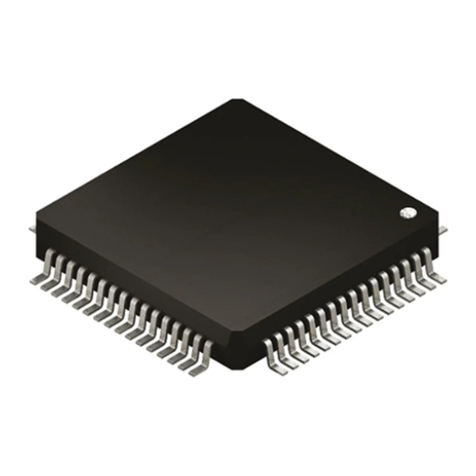
STMicroelectronics
STMicroelectronics RM0365 User manual
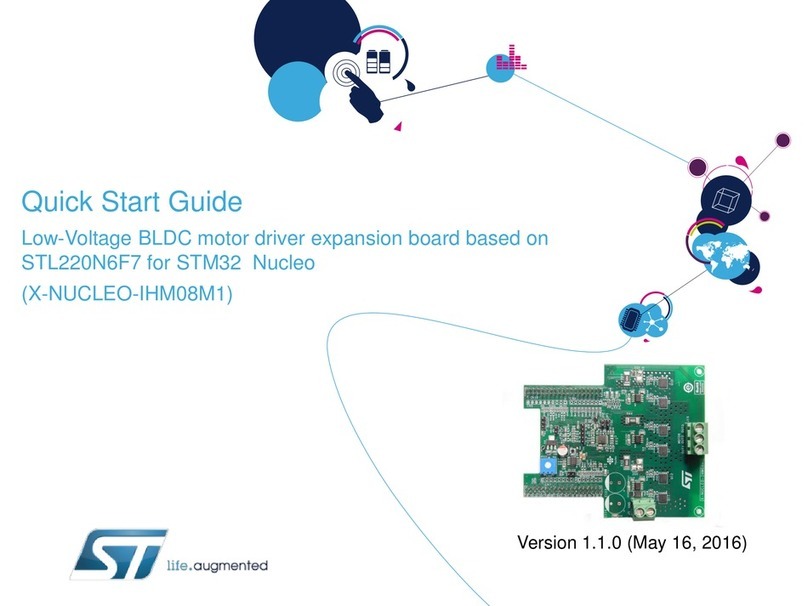
STMicroelectronics
STMicroelectronics X-NUCLEO-IHM08M1 User manual
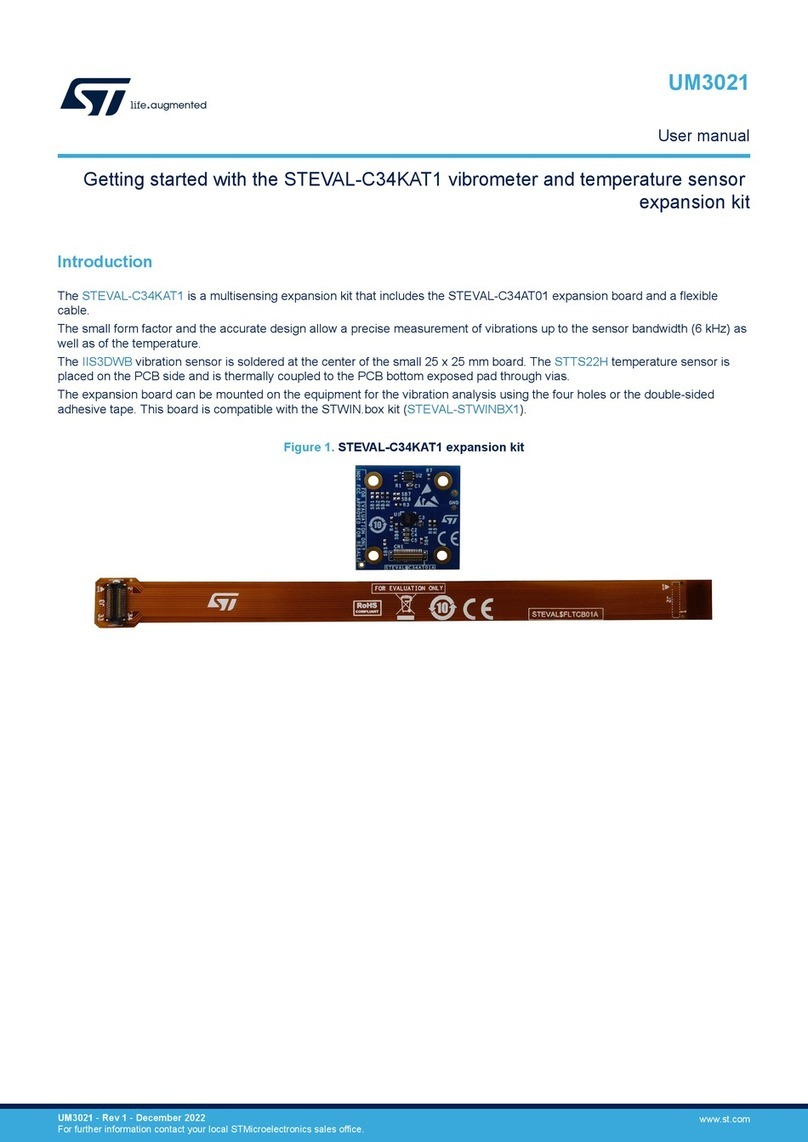
STMicroelectronics
STMicroelectronics STEVAL-C34KAT1 User manual
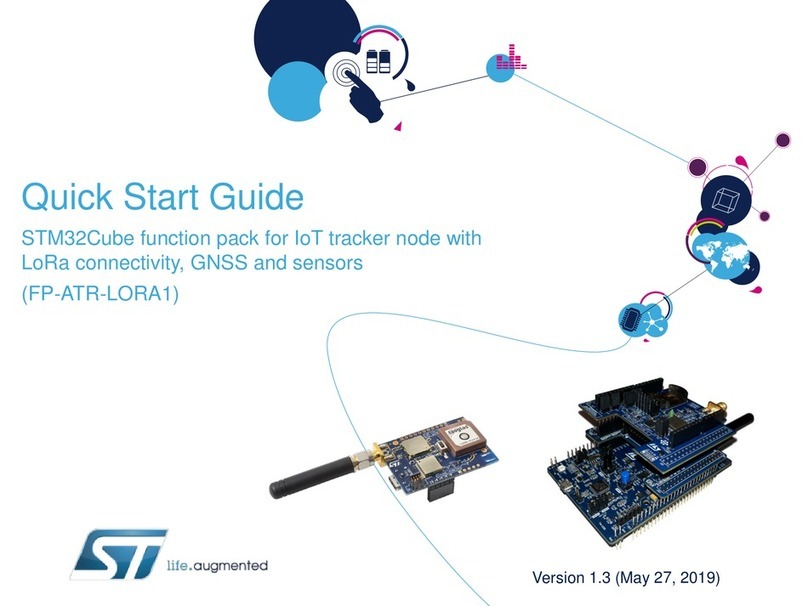
STMicroelectronics
STMicroelectronics STM32Cube User manual
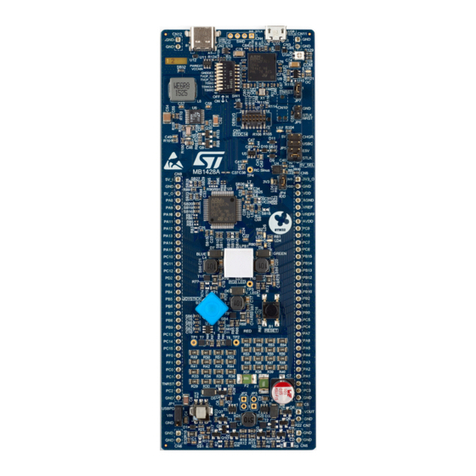
STMicroelectronics
STMicroelectronics B-G474E-DPOW1 User manual
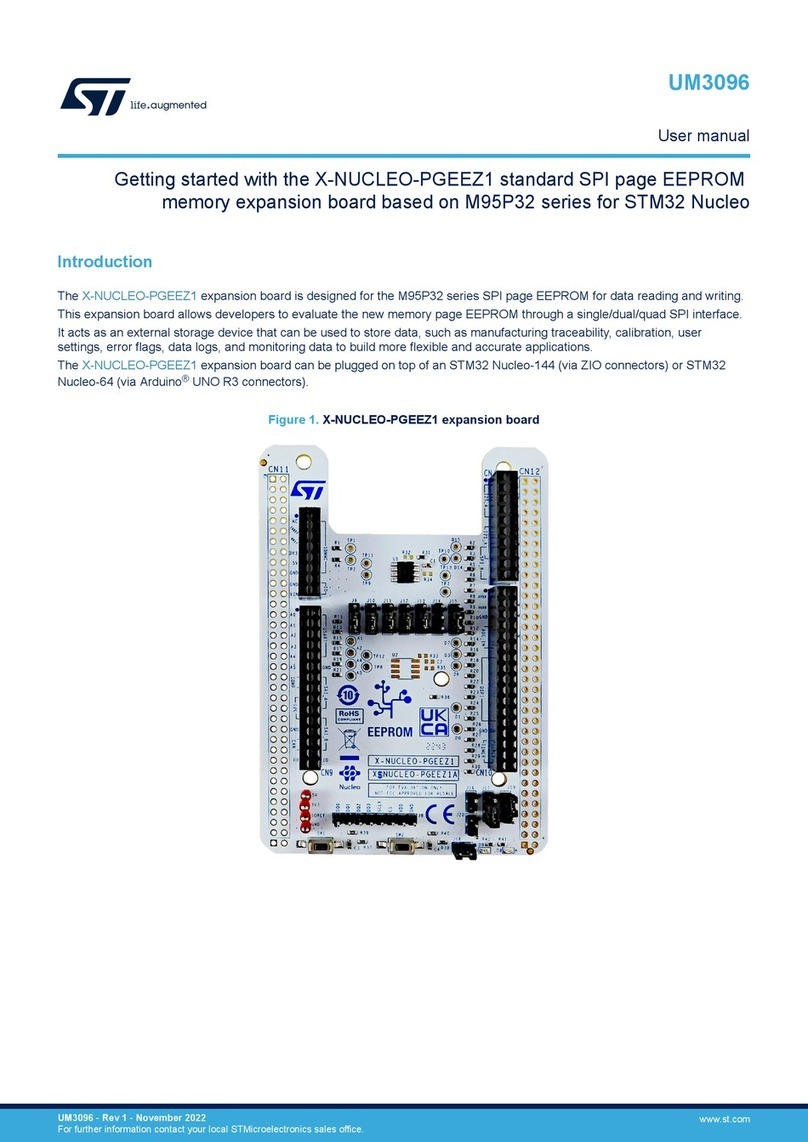
STMicroelectronics
STMicroelectronics X-NUCLEO-PGEEZ1 User manual
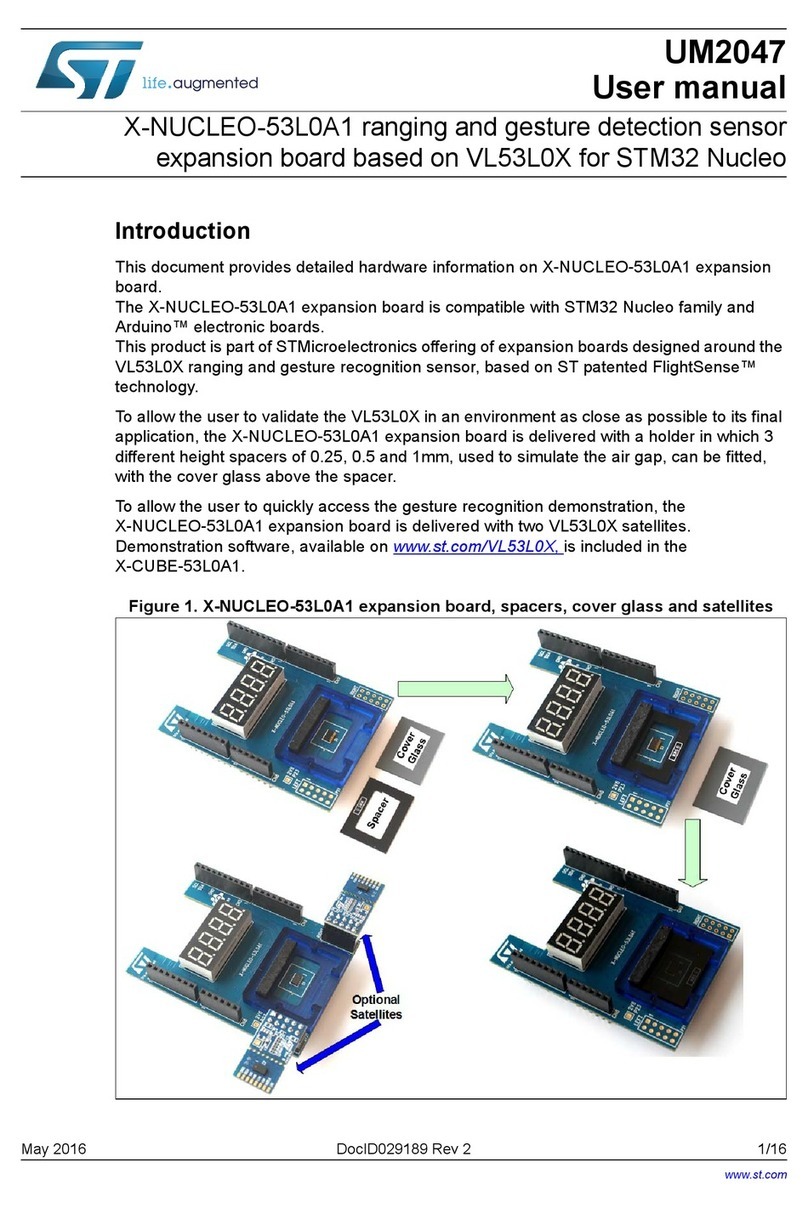
STMicroelectronics
STMicroelectronics X-NUCLEO-53L0A1 User manual

STMicroelectronics
STMicroelectronics ST62GP-EMU2 HDS2 Series User manual
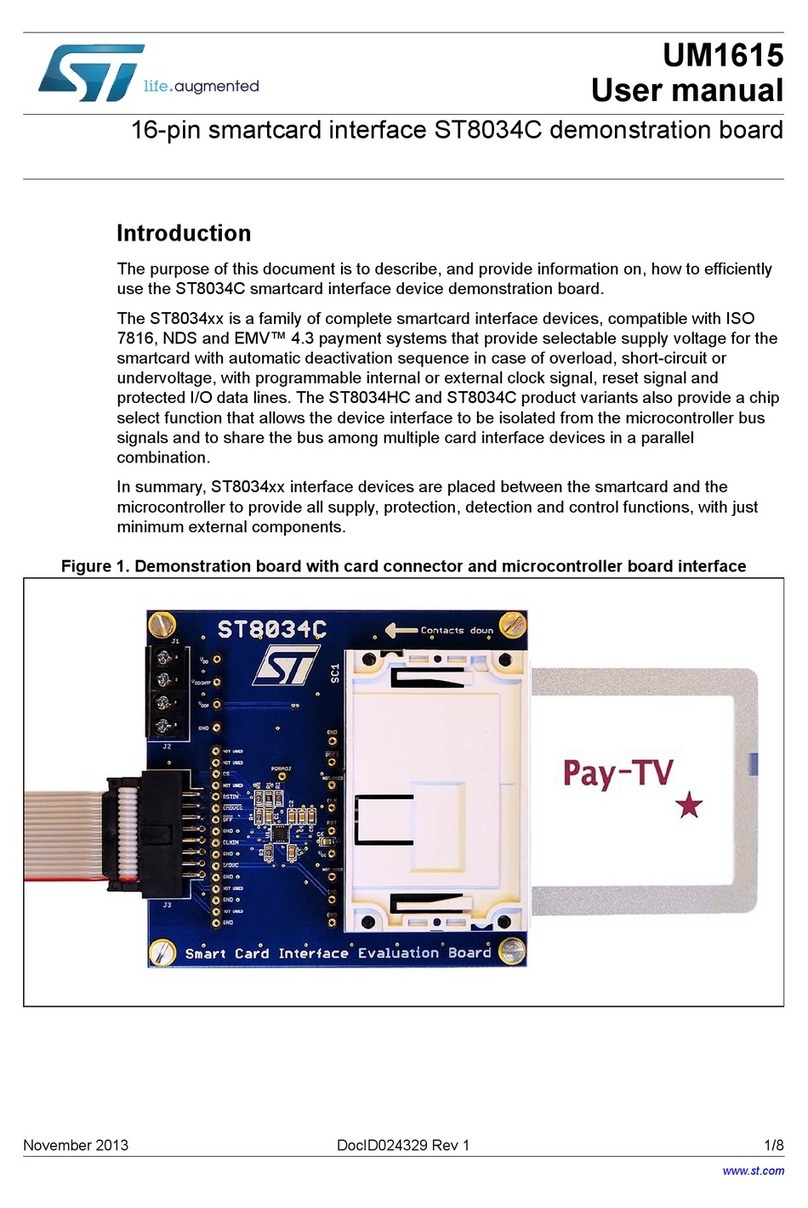
STMicroelectronics
STMicroelectronics ST8034C User manual


